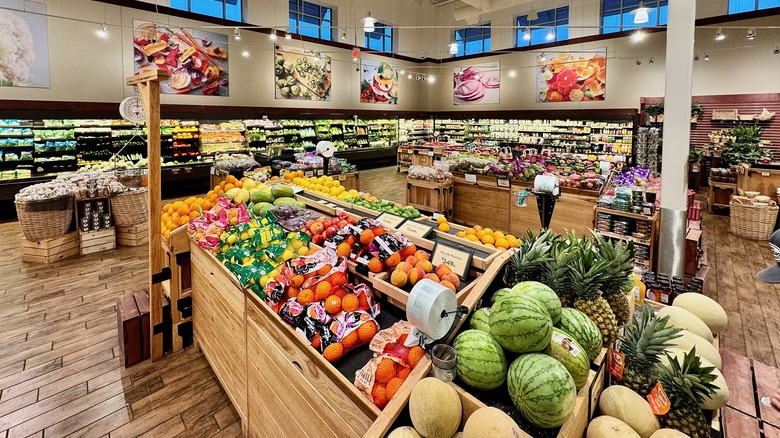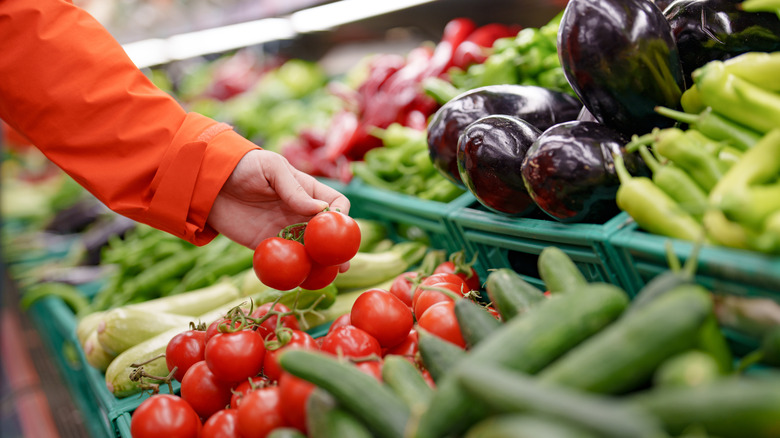The European Inspiration Behind The Fresh Market Grocery Store Chain
In 1930, the grocery shopping experience was transformed when the first King Kullen supermarket opened in Queens, New York. The first chain grocery stores (like Kroger and Loblaws) came to life in the 1920s, but they were still limited in the kinds of products they put under one roof. With the rise of King Kullen, the days of going to butchers, bakers, and greengrocers separately began to decline — all those necessities were in a single, convenient place, and you only had to shop at one grocery store. By the 1980s, the supersized supermarket was the norm. But when Ray and Beverly Berry opened the first The Fresh Market in Greensboro, North Carolina, in 1982, they had a different idea in mind.
Just before Ray Berry left his job overseeing several thousand 7-Eleven stores, the couple had been on a trip to Europe. While traversing its quaint towns and cities, they had fallen in love with the European market. The fare was fresh, and the interactions were intimate. Growers, butchers, and purveyors of all kinds sold their wares out of stalls to clusters of customers — the Berrys were determined to bring these charming tableaus back home.
A long history of dining and dealing al fresco
The initial 14,000-square-foot market was inspired by these European markets, and that aesthetic has persisted in the stores. Wooden shelving and displays hold bright vegetables, glass jars carry old-fashioned candy, and wicker baskets house fresh flowers. On days you shop at The Fresh Market, you'll often find striped awnings atop prepared food counters or the Old World-style butcher. The store's atmosphere stood out from its warehouse competitors as the owners tried to create a welcoming, familiar space to buy the best produce, high-quality meats, and fresh bread.
Although still in the supermarket category, the grocery store chain took part in a millennia-old market tradition. Organized markets can be traced back thousands of years and across the globe — from Egypt more than 4,000 years ago to the height of the Roman empire, European market towns in Medieval times to the Grand Bazaar in Istanbul, Turkey, which has been continuously occupied since the 15th century. The markets were crucial in the development of societies and cultures, providing communal spaces for direct trade. Even in modern times, the European markets are still vibrant, whether open-air gatherings in small villages or vast rows of stalls in metropolitan areas. The Fresh Market's first store birthed over 150 other locations — but the market's full origin

